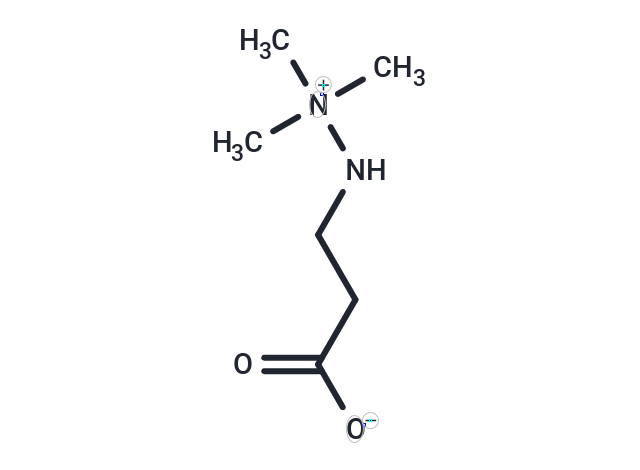Shopping Cart
- Remove All
 Your shopping cart is currently empty
Your shopping cart is currently empty

Mildronate (Meldonium) is an inhibitor of biosynthesis of L-carnitine by gamma-butyrobetaine (GBB) hydroxylase and as a competitive inhibitor of renal carnitine reabsorption.

| Pack Size | Price | Availability | Quantity |
|---|---|---|---|
| 100 mg | $42 | In Stock | |
| 200 mg | $58 | In Stock |
| Description | Mildronate (Meldonium) is an inhibitor of biosynthesis of L-carnitine by gamma-butyrobetaine (GBB) hydroxylase and as a competitive inhibitor of renal carnitine reabsorption. |
| Targets&IC50 | BBOX (human recombinant):34-62 μM (IC50), OCTN2 (human):21 μM (EC50) |
| In vitro | Mildronate (40 μM) inhibits the reaction of γ-butyrobetaine hydroxylase with γ-butyrobetaine with Km and Vmax of 36.8 μM and 0.08 nmol/min/mg protein, respectively. [1] |
| Alias | Quaterin, Meldonium, Kvaterin |
| Molecular Weight | 146.19 |
| Formula | C6H14N2O2 |
| Cas No. | 76144-81-5 |
| Smiles | C[N+](C)(C)NCCC([O-])=O |
| Relative Density. | no data available |
| Storage | Powder: -20°C for 3 years | In solvent: -80°C for 1 year | Shipping with blue ice. | ||||||||||||||||||||
| Solubility Information | H2O: 10 mM, Sonication is recommended. DMSO: Insoluble | ||||||||||||||||||||
Solution Preparation Table | |||||||||||||||||||||
H2O
| |||||||||||||||||||||

Copyright © 2015-2025 TargetMol Chemicals Inc. All Rights Reserved.